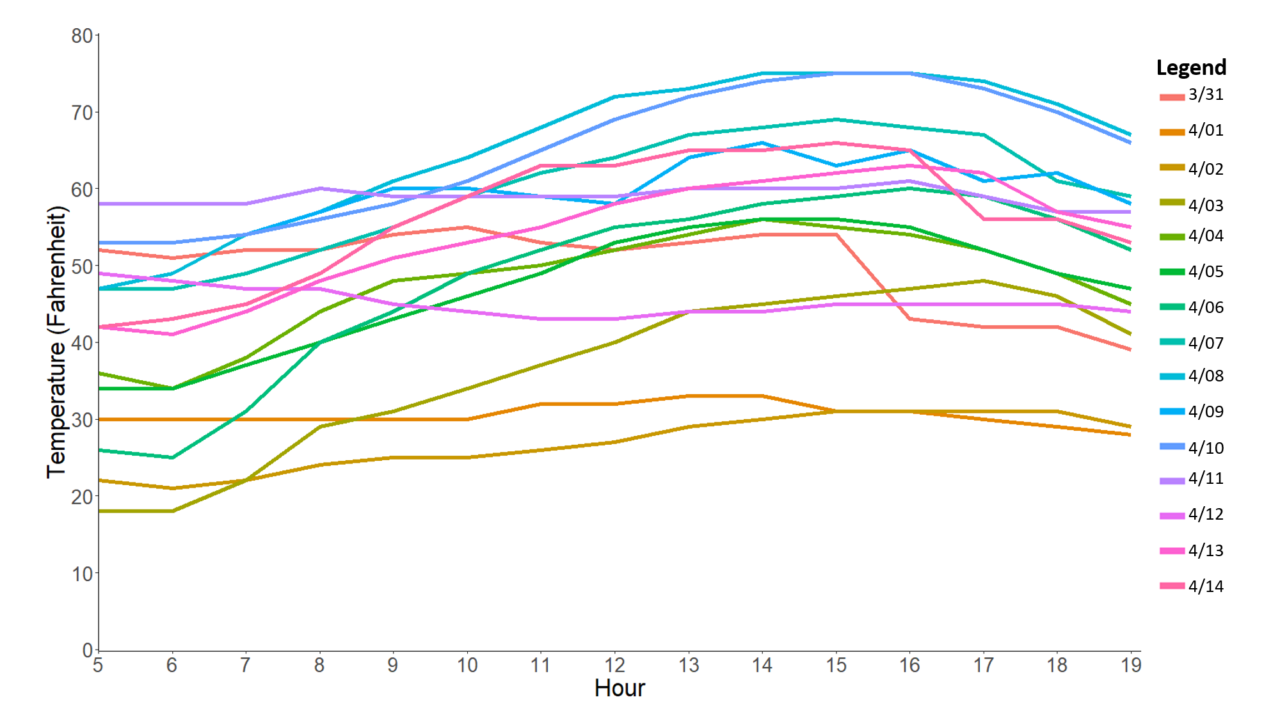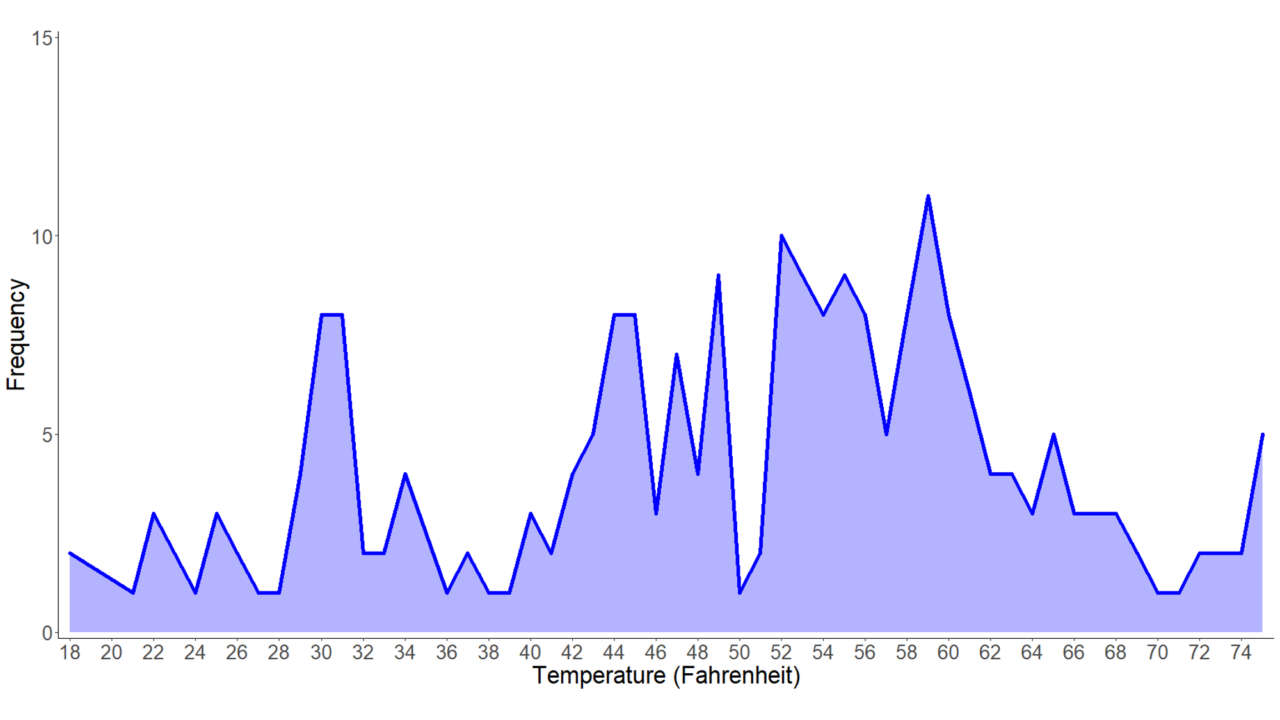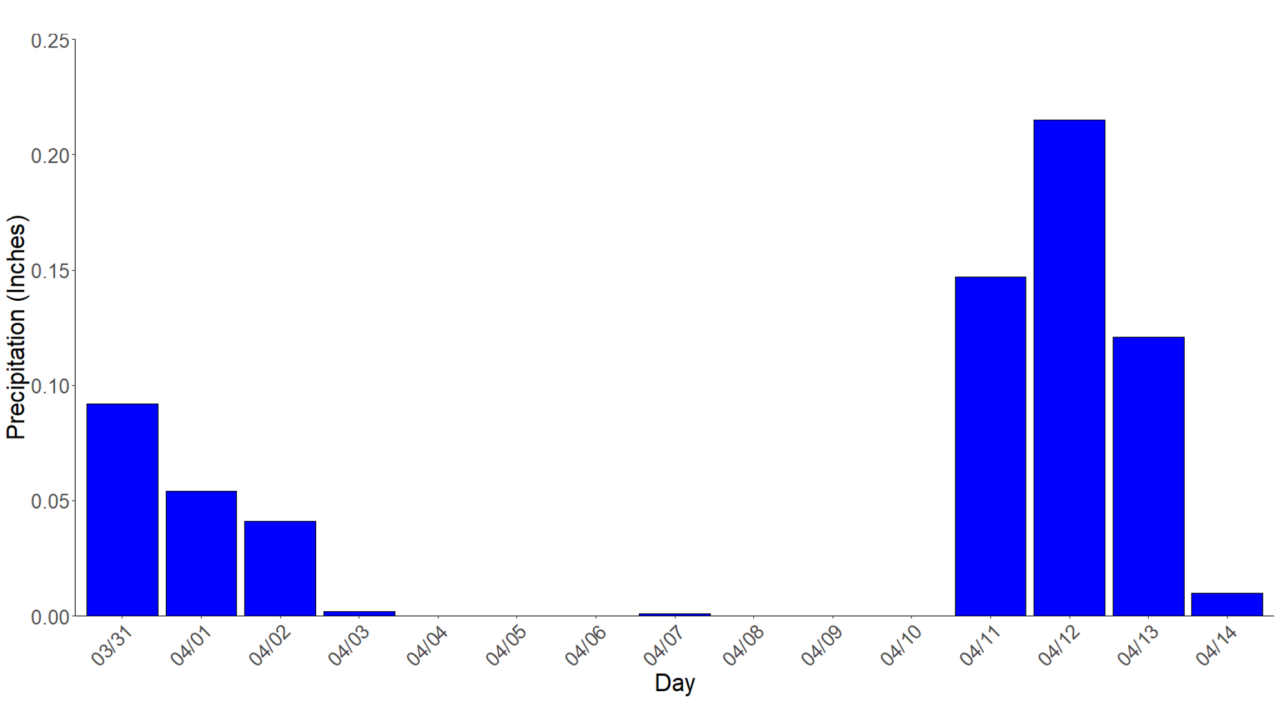What was the weather like during data collection for Cornell Feeders Live?
May 27, 2021
When we came together to figure out what to study with the Cornell FeederWatch cam, many people in the community were interested in the effects of weather. Several people shared their observations at their own bird feeders and their predictions for how weather would affect birds’ behavior at the feeder.
“I would really like to see the correlation of weather and the activity at the feeders. I think about this question often as I observe my feeders and try to make some sense of the effect of weather on our bird buddies.” –Bonnie R
“I have been curious about this watching my own feeder though, already noticing there seems to be very distinct waves of certain species then long periods of nothing in between, sometimes appearing to correlate to “nicer” weather.” –Robin
“I often wonder if the birds can forecast bad weather. My feeders always seem a little busier just before a storm is predicted to roll in.” –Sharon Benson-Perry
“I think the weather question is quite interesting but would want to know the weather from the previous day as I suspect a previous day’s bad weather might increase visits.” –Robin Gibson
“Chickadees and blue jays might be particularly interesting since they are such different sizes — I wonder if small birds are more affected by weather changes than large birds.” –E.B. Fouts-Palmer
When the community upvoted the potential questions for investigation by feasibility and interest, the research question about weather rose to the top as one of our two research questions: How does weather affect the probability of different species visiting the feeders? The community also voted on which weather variables we’d look at first: temperature and precipitation (ex: amount of rain, snow, ice).
After data collection ended on April 14, the Bird Cams staff reached out to the closest weather station to the feeder station, located at the Ithaca Airport (approximately 1.6 miles away). The weather station records temperature (Fahrenheit) and precipitation (in inches) at the beginning of each hour.
Before we share visualizations that link the presence of each species at the feeding station to temperature and precipitation, we want to share visualizations of the weather data itself. Looking at how much the temperature and precipitation vary by hour, by day, and understanding the frequency of certain temperatures and precipitation will help us better understand what’s going on and inform our interpretations.
Temperature
Hourly Temperature
 Figure 1. The temperature, in degrees Fahrenheit, is shown on the vertical axis and the hour of the day advances from 5:00 to 19:00 (i.e. 7:00 PM) on the horizontal axis. Each day is represented by each individually colored line.
Figure 1. The temperature, in degrees Fahrenheit, is shown on the vertical axis and the hour of the day advances from 5:00 to 19:00 (i.e. 7:00 PM) on the horizontal axis. Each day is represented by each individually colored line.Daily Temperature
 Figure 2. The temperature, in degrees Fahrenheit, is shown on the vertical axis and the day of data collection advances from March 31 to April 14 on the horizontal axis. Each dot corresponds to the temperature reading associated with each hour that day from 5:00 to 19:00 (i.e. 7:00 PM).
Figure 2. The temperature, in degrees Fahrenheit, is shown on the vertical axis and the day of data collection advances from March 31 to April 14 on the horizontal axis. Each dot corresponds to the temperature reading associated with each hour that day from 5:00 to 19:00 (i.e. 7:00 PM).Temperature frequency
 Figure 3. The frequency of each temperature, in degrees Fahrenheit, during the data collection period. Frequency, or how many times the temperature was recorded, is on the vertical axis and temperature increases on the horizontal axis from 18 to 75 degrees Fahrenheit.
Figure 3. The frequency of each temperature, in degrees Fahrenheit, during the data collection period. Frequency, or how many times the temperature was recorded, is on the vertical axis and temperature increases on the horizontal axis from 18 to 75 degrees Fahrenheit.Precipitation
Daily Precipitation
 Figure 4. A bar chart showing the total precipitation (inches) recorded for each day during the data collection period (March 31 to April 14).
Figure 4. A bar chart showing the total precipitation (inches) recorded for each day during the data collection period (March 31 to April 14).Precipitation Frequency
 Figure 5. The frequency of each precipitation reading (inches) during the data collection period. Frequency, or how many times the precipitation reading was recorded, is on the vertical axis and precipitation increases on the horizontal axis from 0 to 0.030 inches.
Figure 5. The frequency of each precipitation reading (inches) during the data collection period. Frequency, or how many times the precipitation reading was recorded, is on the vertical axis and precipitation increases on the horizontal axis from 0 to 0.030 inches.What are your thoughts after looking at these visualizations? Do you have any ideas or questions about how we are looking at weather?
Please share your thoughts in the forum below.